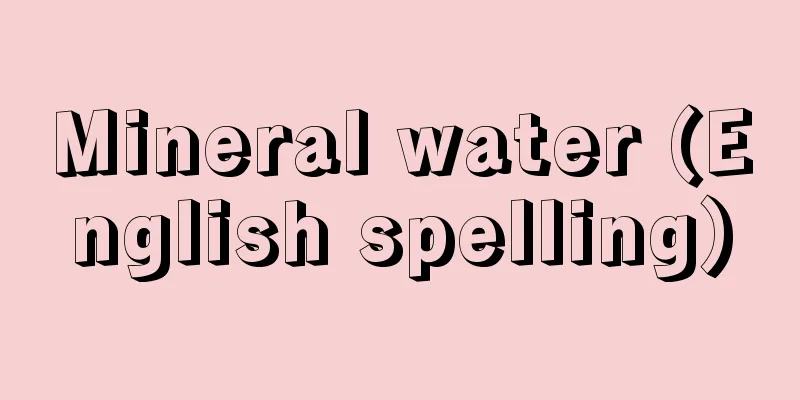Fish attracting lamp

|
A light used to attract fish, it is a type of secondary fishing gear. The fishing method of using light to attract phototactic fish has been practiced since the Edo period. Initially, bonfires and pine resin were used, but in the Meiji and Taisho periods, acetylene gas and oil lamps were used. This was followed by battery-powered light bulbs, and it was not until the 1930s that fish-attracting light fishing began to develop in earnest, when oil- or gasoline-powered generators, or generators directly connected to the main engine, began to be used. Although LED lighting fixtures are becoming more popular in ordinary homes as an energy-saving measure, various types of fish-attracting light bulbs have been devised to save energy for fishing as well. Various light sources are designed taking into consideration the light-seeking behavior of fish, their relationship with onboard power sources, and problems with use as surface or underwater lights, and characteristics such as luminous efficiency, light color, service life, shape, and ease of use as fish-attracting lights. This paper classifies the light sources of currently used fish-attracting lights based on the light-emitting principle, and provides an overview of the structure and characteristics of the light sources. (1) Incandescent light bulbs Incandescent light bulbs are the most widely used and have the highest usage rate. Incandescent light bulbs are light sources that emit visible light by heating a filament to a high temperature and emitting the heat, and changing the voltage applied to the bulb greatly changes the filament temperature, current, luminous flux, efficiency, and service life. (2) Halogen bulbs These bulbs are filled with an inert gas containing a small amount of halogen, and utilize the chemical reaction of the halogen to return evaporated tungsten to its original filament, preventing the bulb from blackening. They have higher output than incandescent bulbs, and their wide horizontal light distribution makes them suitable for floodlighting. (3) Fluorescent lamps: When fluorescent paint is applied to the inner wall of a glass tube and turned on, ultraviolet light is generated by discharge, which is then converted into light by the phosphor and emitted. Although the ultraviolet light generated inside the tube is the same, any wavelength can be obtained depending on the type of phosphor, so it is possible to select a wavelength (colored light) that matches the water color of the area in which it is used and the phototaxis of fish. (4) Mercury lamps are high-pressure discharge lamps that use light emitted by discharging electricity in high-pressure mercury vapor, and have a double structure consisting of an arc tube and an outer tube that protects it. Their luminous efficiency is about three times that of incandescent bulbs, and their service life is as long as 10,000 hours, about 10 times that of incandescent bulbs, and they are stable. (5) Metal halide lamps are a type of mercury lamp that is both highly efficient and has high color rendering, but they have attracted attention as discharge lamps with high fuel-saving properties, and are therefore named metal halide lamps separately from mercury lamps. These are light sources in which metal halides are enclosed inside the light-emitting tube of a conventional mercury lamp, and one or more types of metal halides such as sodium, indium, thallium, scandium, dysprosium, thorium, and tin are used, with the most efficient light-emitting element selected according to lamp performance. For example, metal halides such as cadmium are used for red light, indium for blue light, and thallium for green light. (6) LED (Light Emitting Diode) A light source consisting of a small semiconductor chip covered in resin that emits light when an electric current is passed through it. In addition to features such as small size, light weight, high visibility, and fast response speed, LEDs are considered to be effective in reducing environmental impact because they have a long life, low power consumption, and do not use harmful substances such as mercury. For fishing purposes, squid fishing boats in particular require a huge amount of light, and LEDs are attracting attention as a low-energy light source. [Hideo Soeda and Kiyoshi Yoshihara] Fishing lamp fishingFish-attracting light fisheries are fisheries that target fish that have a tendency to gather in large numbers, such as phototactic fish and squid, and are typified by pacific saury pole-held net fisheries, squid angling fisheries, mackerel spear-held fishing, mackerel scoop net fisheries, and sardine, horse mackerel, and mackerel purse seine fisheries (properly called purse seine fisheries in the fishing industry). In addition, the total power consumption of the fish-attracting lights used in pacific saury pole-held net fisheries is limited to 250 kilowatts or less. [Hideo Soeda] [Reference items] | | |Source: Shogakukan Encyclopedia Nipponica About Encyclopedia Nipponica Information | Legend |
|
魚類を集めるための灯火で、副漁具の一種。走光性のある魚類に火光を用いて魚を集めて漁をする漁法は、江戸時代から行われてきた。当初は篝火(かがりび)、松脂(まつやに)などが使用されていたが、明治・大正時代にはアセチレンガス、石油灯などが使用された。ついで電池式の電球となり、本格的に集魚灯漁業として発展したのは、石油やガソリン駆動による発電機、または主機直結用発電機が使用されるようになった昭和10年代からである。 一般家庭においても省エネルギーの立場からLEDなどの照明器具が普及しつつあるが、漁業用としても省エネルギー化を図るべく各種の集魚灯用電球が考案されている。各種の光源は、魚類の対光行動、船内電源との関係、水上灯または水中灯としての使用上の問題点などが勘案され、集魚灯用としての発光効率、光色、耐用時間、形状および取扱い上の難易度などの特性が考慮される。 現在使用されている集魚灯の光源を発光原理から分類し、光源の構造、特性などの概要を説明する。 (1)白熱電球 広く普及しているのが白熱灯で、使用率がもっとも高い。白熱電球は、フィラメントを高温に白熱させ、その熱放射によって可視光を出す光源で、電球に加える電圧を変化させるとフィラメント温度、電流、光束、効率、耐用時間が大きく変化する。 (2)ハロゲン電球 微量のハロゲン物質を含む不活性ガスを封入し、ハロゲン物質の化学反応を利用して、蒸発したタングステンをふたたび元のフィラメントに戻し、電球の黒化を防止した電球である。白熱電球より高出力で、横に広い配光は投光用照明に適している。 (3)蛍光灯ランプ ガラス管の内壁に蛍光塗料を塗布して点灯すると、放電によって紫外線が発生し、蛍光体によって紫外線が光に変化して放射される。管内で発生する紫外線は同じでも、蛍光体の種類によって自由な波長を得ることができるので、使用海域の水色、魚類の走光性に合致した波長(色光)を選択することができる。 (4)水銀ランプ 高圧水銀蒸気中の放電による発光を利用した高圧放電ランプで、発光管とそれを保護する外管の二重構造となっている。発光効率は白熱電球の約3倍で、耐用時間も1万時間と長く白熱電球の約10倍もあり、安定している。 (5)メタルハライドランプ 高効率化と高演色を兼ねた水銀ランプの一種であるが、省燃油性の高い放電灯として注目され、水銀ランプとは別にメタルハライドランプと名づけられた。これは、従来の水銀ランプの発光管内に、金属ハロゲン化物を封入した光源で、ナトリウム、インジウム、タリウム、スカンジウム、ジスプロシウム、トリウム、スズなどの金属ハロゲンを1種または数種を組み合わせ、ランプ性能にあわせて効率よく発光するものを選択して用いる。たとえば、赤色光用にはカドミウム、青色光用にはインジウム、緑色光用にはタリウムなど金属ハロゲン化物を用いている。 (6)LED(Light Emitting Diode、発光ダイオード) 電流を流すと発光する小さな半導体チップを樹脂で覆った光源である。小型、軽量、高い視認性、速い応答速度などの特徴に加えて、長寿命、低消費電力、水銀などの有害物質を使用しないなど環境負荷の低減に有効とされている。漁業用としてはとくにイカ釣り漁船などでは莫大な光量が必要であり、低エネルギーの光源として注目されている。 [添田秀男・吉原喜好] 集魚灯漁業集魚灯漁業は、走光性をもつ魚類やイカ類など多獲性で集群性を有する魚類を対象とする漁業で、サンマ棒受網(ぼううけあみ)漁業、イカ釣り漁業、サバはね釣り漁業、サバたもすくい網漁業、イワシ・アジ・サバ巻網漁業(漁業において正しくは旋網(まきあみ)漁業と表記)などに代表される。また、サンマ棒受網漁業に使用する集魚灯の光力は、消費電力の総和が250キロワット以下に制限されている。 [添田秀男] [参照項目] | | |出典 小学館 日本大百科全書(ニッポニカ)日本大百科全書(ニッポニカ)について 情報 | 凡例 |
<<: Inviolability of the dwelling - juukyou no fukashin
Recommend
King Jinheung
The 24th king of Silla, Korea (reigned 540-576). ...
Bregmatic presentation
This is a type of fetal position abnormality, and ...
Far Eastern Republic (English: Dal'nevostochnaya Respublika/Dal'nevostochnaya Respublika) Russian
A democratic republic established in 1920-22, mos...
Lythrum salicaria - Lythrum salicaria
A perennial plant of the Lythraceae family (APG c...
Chao Anou (English spelling)
1767‐1829 King of the Laotian Kingdom of Vientiane...
Totonaka culture
The ancient Totonaca culture developed in the cent...
Alpine butterfly
A general term for alpine and subalpine butterflie...
Aeschynomene indica (English spelling)
An annual plant of the legume family. It grows in ...
Thiosulfate
...The etherified product is extracted by reactin...
Kingdom of Abomey
...It flourished from the beginning of the 17th c...
Kasugata Zushi - Kasugata Zushi
...However, in the Nara period, a shrine that loo...
Akhī (English spelling)
…After the Battle of Malazguird (1071), it came u...
Troubadours
A general term for the troubadours of southern Fra...
Kenpeki Seiya (English spelling)
A defensive tactic that was used for a long time i...
Ibas - Ibas
…The “Tria Kephalaia” (Three Chapters) refers to ...









